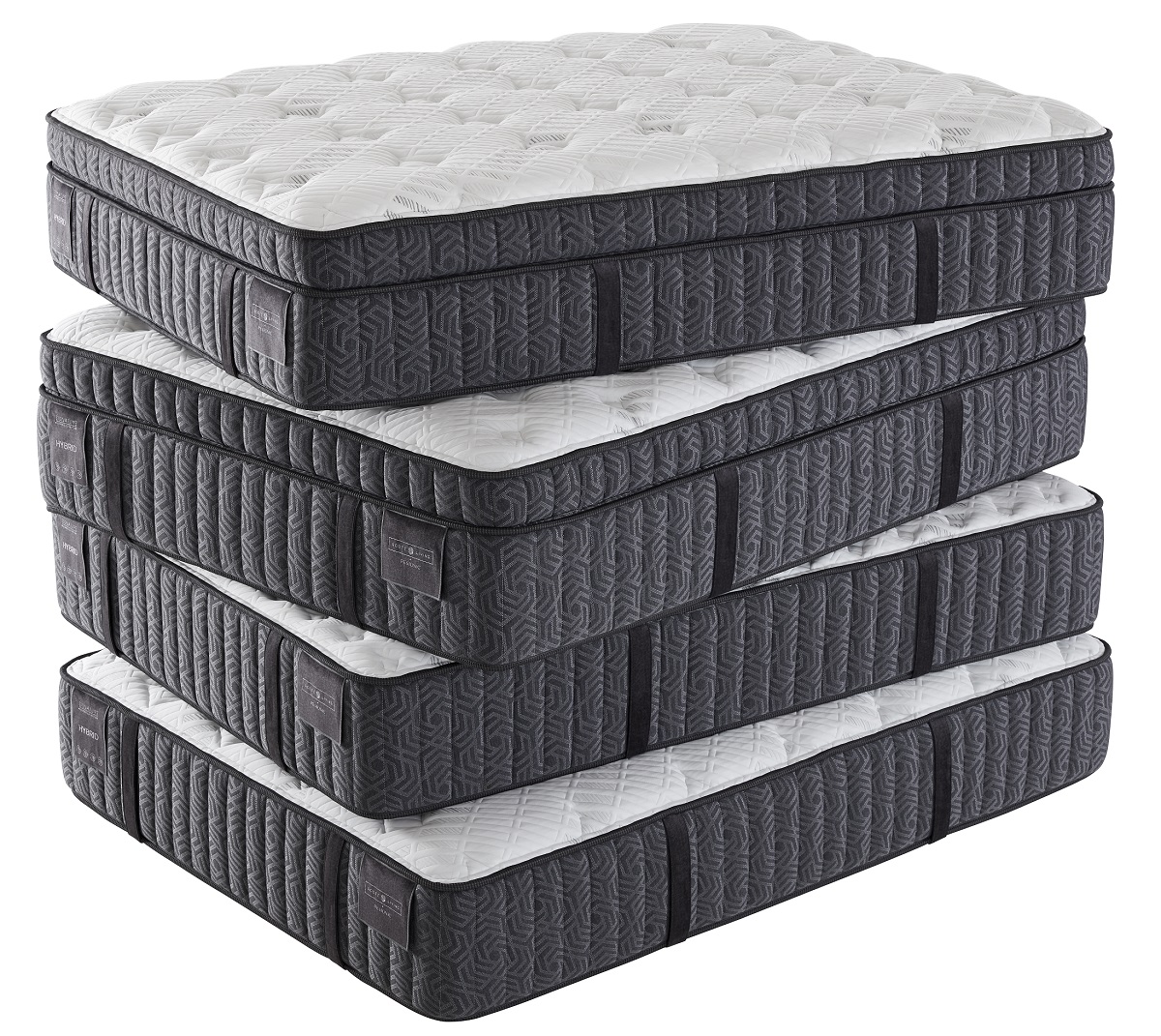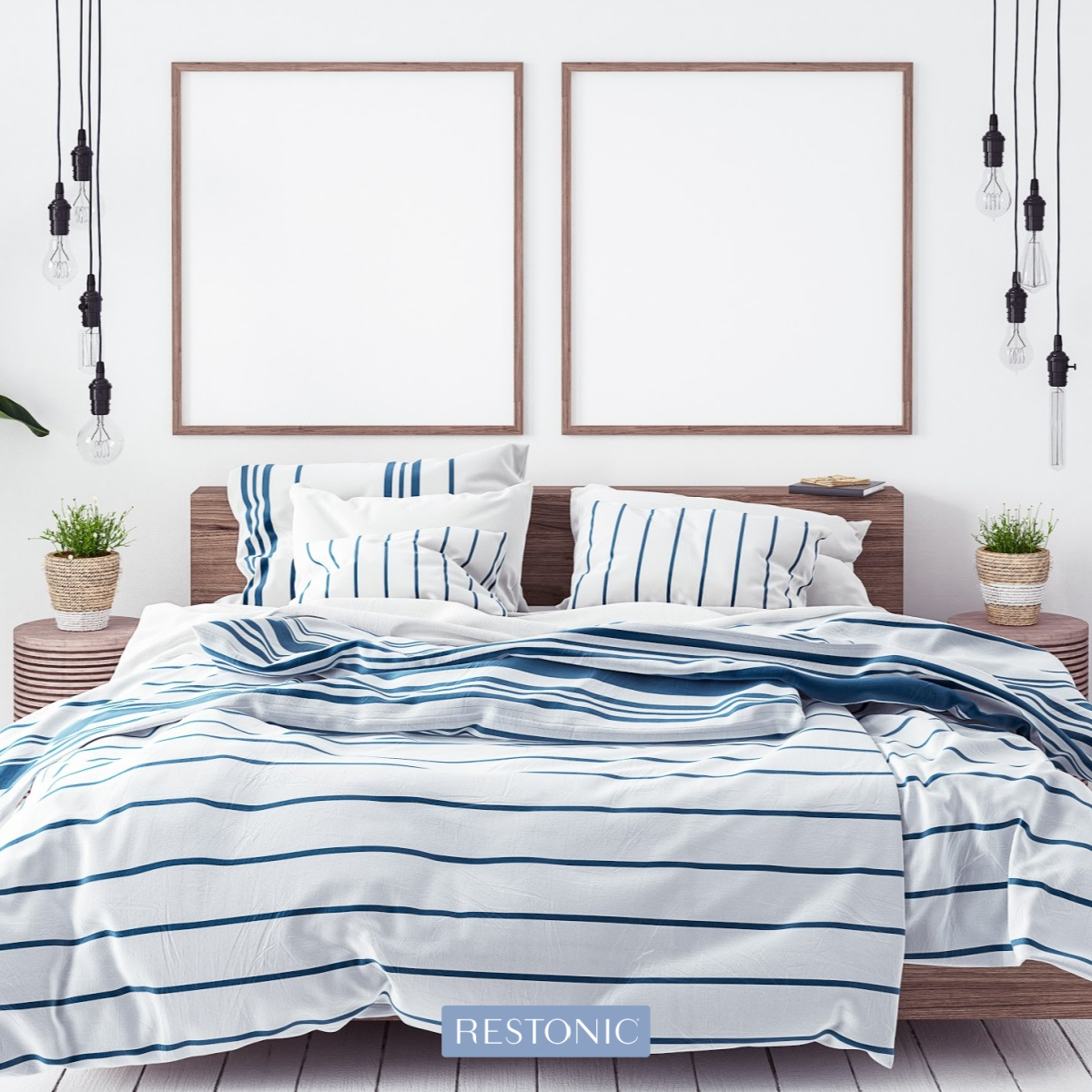 Learn how being too hot or too cold causes restless nights and what you can do about it
Learn how being too hot or too cold causes restless nights and what you can do about it
Some people love a chilly room with the windows open any time of the year, while others like to wrap themselves in a warm cocoon of blankets. Despite personal preferences, experts agree that a bedroom 60-67F (16-19C) is ideal. Why is cool better? What happens to the quality of your sleep if you overheat? Let’s take a deep dive into the hot and cold facts on the effect of temperature on the quality of your rest.
Why room and body temperature matter when it comes to sleep
Put simply, bedroom temperature is important. “In terms of sleep, room temperature is among the most significant factors of all,” says Amelia Alvin, a psychiatrist with the Mango Clinic in Miami, Fla. “Our core body temperature is known to hover near 98.5 Fahrenheit. It can vary in the range of 2 degrees Fahrenheit during the night, starting to drop after two hours of sleep and reaching the lowest point closer to morning when you are about to awake.”
This decrease in body temperature coincides with the release of melatonin, an important hormone tied to sleep. An overly warm bedroom causes a disturbance to sleep cycles as the body struggles to deal with the discomfort of trying to cool itself through sweat. Along with disrupted sleep, dehydration is a significant risk. The higher your core body temperature, the less regenerative your sleep.
 An overly hot bedroom (more than 75.2 F or 24C) can decrease Non-rapid Eye Movement (NREM) and REM sleep. These important sleep cycles assist with biological processes that help us feel healthy, as well cell reparation and memory storage. Being too warm when you try to sleep disrupts your circadian rhythms and may lead depression, weight gain and behavior changes.
An overly hot bedroom (more than 75.2 F or 24C) can decrease Non-rapid Eye Movement (NREM) and REM sleep. These important sleep cycles assist with biological processes that help us feel healthy, as well cell reparation and memory storage. Being too warm when you try to sleep disrupts your circadian rhythms and may lead depression, weight gain and behavior changes.
“Through evolution, our brains and bodies have learned that it’s time for sleep when the temperature drops,” explains Dr. Dennis Polzin, a primary care physician with Wild Bear Medicine and author of The Healthy Nomad Handbook. “Therefore, it can be helpful to decrease body temperature prior to sleep. This can be done by changing into lighter clothing, using a fan and bathing or rinsing the face before sleep.”
Research also shows that a cooler bedroom temperature provides a deeper Non-rapid Eye Movement (NREM) sleep, which means a more restorative sleep. Just don’t set the thermostat too cool overnight. A cool room doesn’t pose the same issues as a hot one, but it can be disruptive when it’s too cold and hits temperatures in the low 50s. “Humans also have an automatic response to shiver and engage muscles when our body temperature drops too cold which can wake us during sleep in very cold environments,” he notes.
Comfort is a subjective thing, Dr. Polzin points out. “Each person may have a different preferred temperature based on their own metabolism, hormone levels, body type, etc. Texture, cleanliness, airflow, and visual and auditory environment are also key factors affecting comfort.”
How mattress and bedding choices can keep you cool
 Some mattresses, mattress toppers, pillows and fabric types can be used to keep your bed cool, he notes. “Certain materials allow more air to flow in and out of them causing a cooling effect. Other materials are denser and can create more warmth.”
Some mattresses, mattress toppers, pillows and fabric types can be used to keep your bed cool, he notes. “Certain materials allow more air to flow in and out of them causing a cooling effect. Other materials are denser and can create more warmth.”
Today’s mattresses incorporate the latest technology to ensure that sleepers stay comfortable at just the right temperature all night long. It’s in the details, like Restonic’s ventilated mattress borders and cool-to-the-touch fabrics. Foam plays an important role, too. A recent test report from Peterson Chemical Technology in Arizona examined the Scott Living Shippable Sleep mattress, featuring one inch of an AlumiLast® foam layer on top and compared it with another control mattress with conventional foam as the uppermost layer.
The findings showed that the maximum temperature reached by the Scott Living mattress was 2.6 F cooler than that of the control mattress. The time it took the mattress to reach its max temperature was 16% longer compared to the control mattress. The Scott Living mattress stayed cooler up to two times longer as well. The data underscores the fact that not all mattresses are created equally. The materials used to make them have a significant impact on temperature regulation for sleepers.
For a cooler sleep, your cheat sheet for sheets
 Light, breathable sheets are a great option for keeping you cool while you snooze. Materials such as 100% cotton (especially Egyptian and Pima) trap less heat and allow much more air circulation. Don’t get too caught up in thread counts – quality options are available in the 300 to 400 thread count range. Though you’ll see plenty of microfiber choices, keep in mind that they’re made with fine fibers of polyester, which are less breathable.
Light, breathable sheets are a great option for keeping you cool while you snooze. Materials such as 100% cotton (especially Egyptian and Pima) trap less heat and allow much more air circulation. Don’t get too caught up in thread counts – quality options are available in the 300 to 400 thread count range. Though you’ll see plenty of microfiber choices, keep in mind that they’re made with fine fibers of polyester, which are less breathable.
A recent trend in bedding is a nod to more sustainable options, like 100% bamboo fabric. And it’s strong fibers (which are silky soft) are long-lasting with an added bonus of gradually getting softer and softer from wash to wash. It’s naturally temperature-regulating and hypoallergenic, making it suitable for people with eczema and allergies.
The bottom line: Keep your cool to ensure you’ll have a blissful night of sleep.
Rest well & wake up ready to go!
Better sleep gives rise to better mornings, bringing your goals into focus and dreams within reach. Hungry for more sleep info? Dig into these posts:
Eager for more sleep info you can really use?
Join our community
Facebook
and let's continue the conversation.
We'd love to hear what you have to say!
This blog does not provide medical advice. It is intended for general informational purposes only and does not address individual circumstances. It is not a substitute for professional medical advice, diagnosis or treatment and should not be relied on to make decisions about your health. Never ignore professional medical advice in seeking treatment because of something you have read on Restonic.com. If you think you may have a medical emergency, immediately call your doctor or dial 911.

